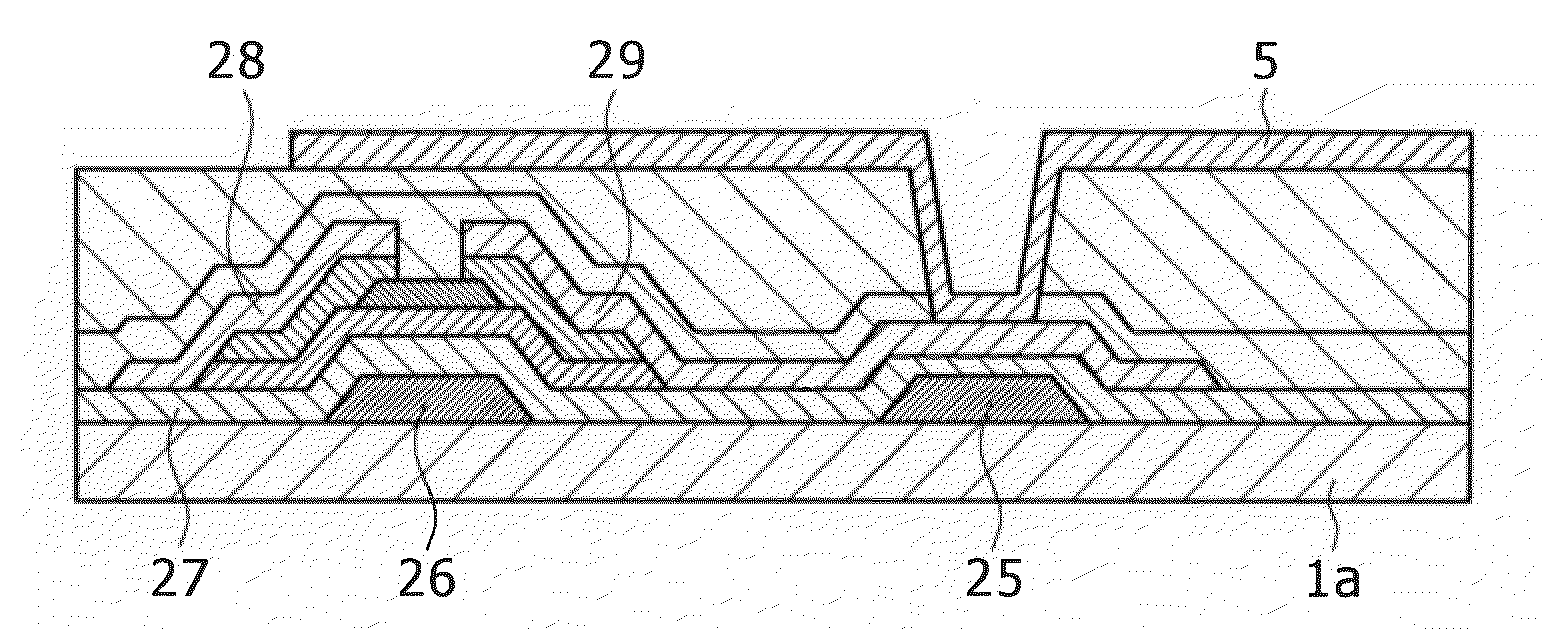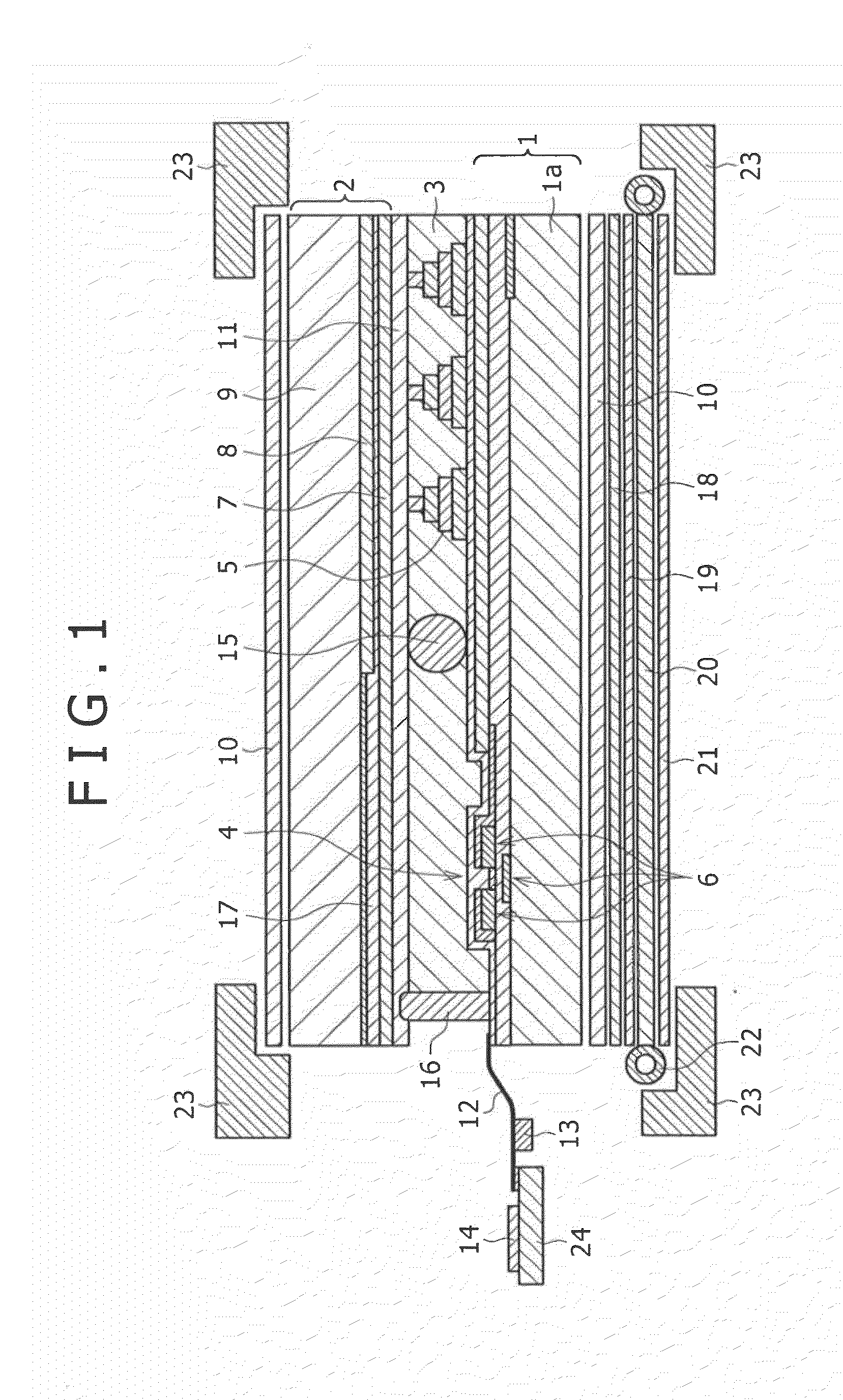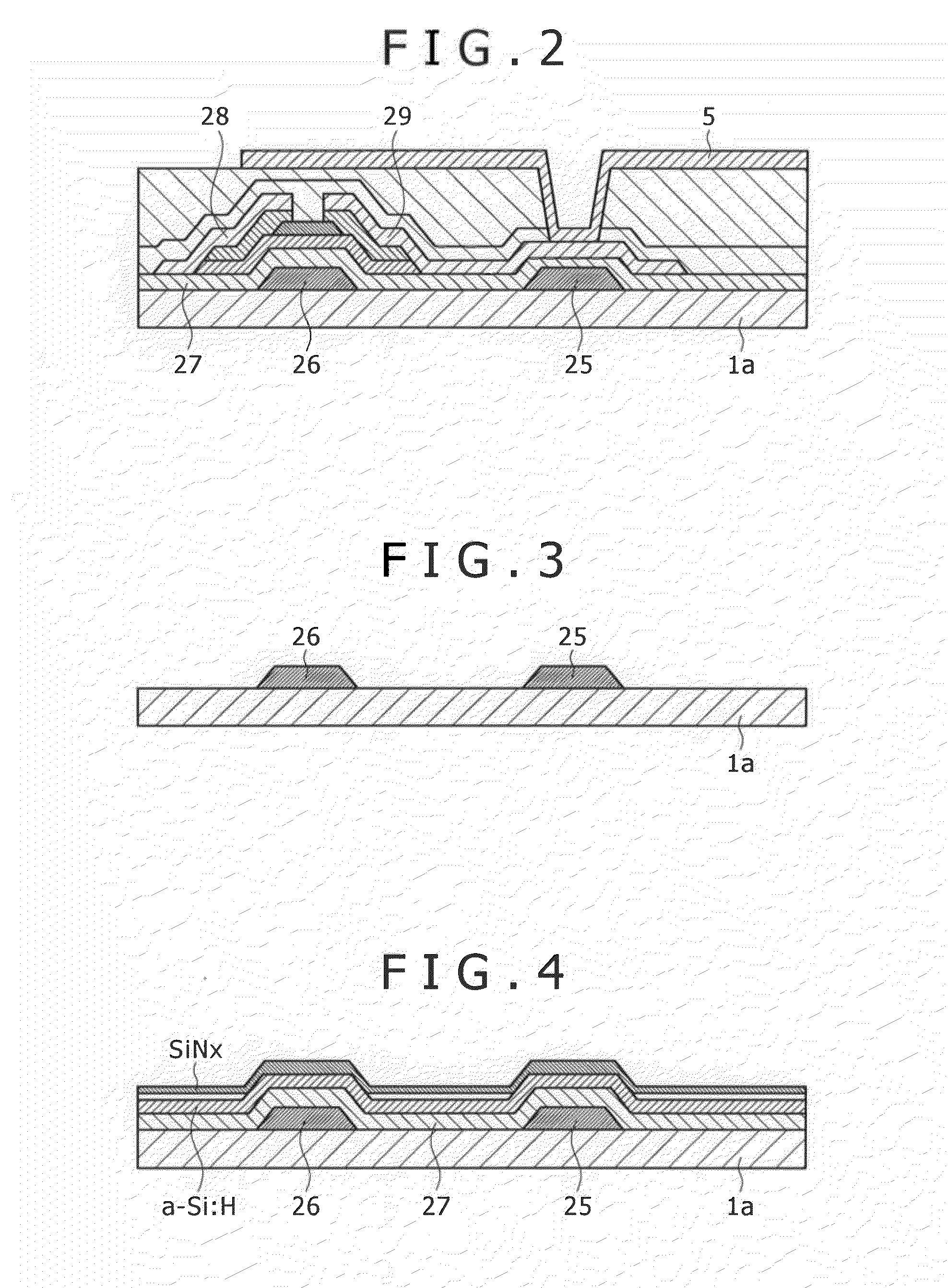Electrode of aluminum-alloy film with low contact resistance, method for production thereof, and display unit
a technology of aluminum alloy and contact resistance, which is applied in the direction of electrical devices, semiconductor devices, instruments, etc., can solve the problems of defective display (defective glowing) and uneven image display in the display unit, and achieve the effect of reducing contact resistance and minimizing the number of pixel errors in the display uni
- Summary
- Abstract
- Description
- Claims
- Application Information
AI Technical Summary
Benefits of technology
Problems solved by technology
Method used
Image
Examples
example 1
[0062]A non-alkali glass plate (0.7 mm thick) as a substrate was coated by sputtering with a thin film of aluminum alloy (varying in composition) which functions as the gate electrode and the source-drain electrodes. The aluminum alloy contains Al, Ni (0.2-1.0 atom %), and La (0.1-0.5 atom %). The thin film is about 300 nm thick. The coated glass plates were used as samples.
[0063]The samples were divided into four groups (A to D). The samples of Group A (designated as Test Nos. 1 to 3 in Table 1 given later) were left as such, and the samples of Group D (designated at Test Nos. 15 to 22 in Table 1) underwent wet etching with an alkaline solution (an aqueous solution, pH 9-13, of resist remover “TOK106” from TOKYO OHKA KOGYO CO., LTD.).
[0064]The aluminum alloy thin film, with or without etching (in both Group A and Group D), underwent photolithography and etching for patterning. This etching was performed such that the aluminum alloy thin film has its edge sloped about 30-40°. On the...
example 2
[0070]A non-alkali glass plate (0.7 mm thick) as a substrate was coated by sputtering with a thin film of aluminum alloy which functions as the gate electrode and the source-drain electrodes. The aluminum alloy contains Al and Ni (0.22 atom %). The thin film is about 300 nm thick. The coated glass plate was used as a sample.
[0071]The aluminum alloy thin film on the sample underwent wet etching with an aqueous solution, pH 9-13, of resist remover “TOK106” from TOKYO OHKA KOGYO CO., LTD. Duration of wet etching was varied so as to control the amount of etching. The thus treated samples were examined for contact resistance in the same way as in Example 1. They were also examined for surface roughness at interface between the transparent conductive film and the aluminum alloy thin film (in terms of maximum height Rz according to JIS B0601 (2001)). The results are shown in Table 2. (The symbol “-” means no data available.) The data in Table 2 are graphed in FIG. 13 to represent the relat...
example 3
[0073]A non-alkali glass plate (0.7 mm thick) as a substrate was coated by sputtering with a thin film of aluminum alloy which functions as the gate electrode and the source-drain electrodes. The aluminum alloy contains Al, Ni (0.3 atom %), and La (0.35 atom %). The thin film is about 300 nm thick. The coated glass plate was used as a sample.
[0074]Each sample was processed in the same way as in Example 1 to form a contact hole (with an area of 10×10 μm) in the silicon nitride film and then underwent dry etching with a mixed gas composed of SF6 (33.3%), O2 (26.7%), and Ar (40%) or a mixed gas composed of SF6 (60%) and Ar (40%). The dry etching was reactive ion etching (RIE). It also varied in duration from level 1 to level 3 as defined below. After standing for 8 hours, the surface of the aluminum alloy thin film was coated by sputtering with an ITO film, 200 nm thick.
Etching level 1: twice the duration necessary to remove the silicon nitride film formed on the aluminum alloy film.
Et...
PUM
| Property | Measurement | Unit |
|---|---|---|
| surface roughness | aaaaa | aaaaa |
| depth | aaaaa | aaaaa |
| height Rz | aaaaa | aaaaa |
Abstract
Description
Claims
Application Information
 Login to View More
Login to View More - R&D
- Intellectual Property
- Life Sciences
- Materials
- Tech Scout
- Unparalleled Data Quality
- Higher Quality Content
- 60% Fewer Hallucinations
Browse by: Latest US Patents, China's latest patents, Technical Efficacy Thesaurus, Application Domain, Technology Topic, Popular Technical Reports.
© 2025 PatSnap. All rights reserved.Legal|Privacy policy|Modern Slavery Act Transparency Statement|Sitemap|About US| Contact US: help@patsnap.com



